Exploring Azabudai Hills, Tokyo’s Latest Luxe Urban Microcosm
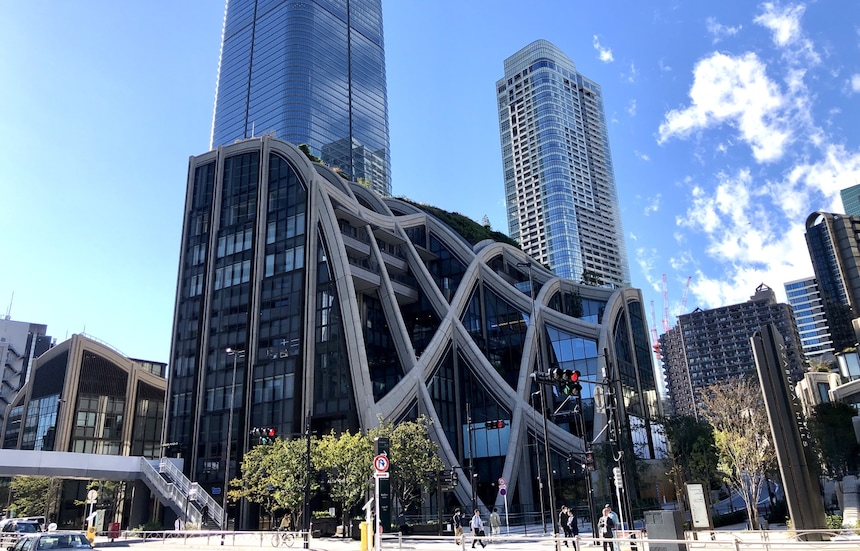
Mori's latest big bet
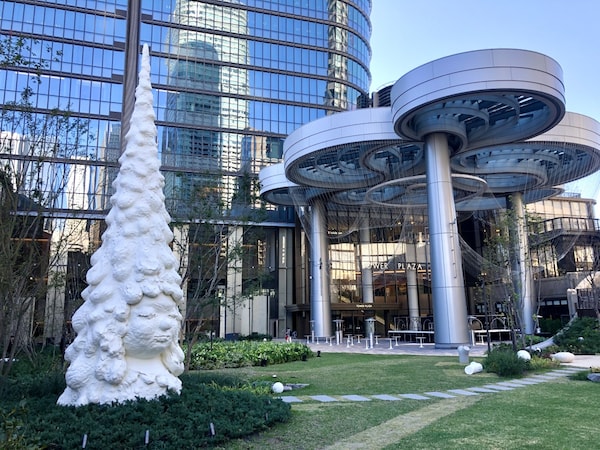
Yoshimoto Nara’s “Miss Forest in Tokyo” in the Azabudai Hills Central Green (photo: Tim Hornyak)
Tokyo is a city marked by constant architectural churn, but it has seen only a few projects the scale of Azabudai Hills. Opened in late November 2023, the $4.2 billion, 8.1-hectare development will eventually have 1,400 residential units, 122 hotel rooms and some 150 retail shops and restaurants. Developer Mori Building Co. expects it to host about 20,000 office workers, 3,500 residents and 30 million visitors annually. It’s both a bid to enhance Tokyo’s status as a competitive global city and a remarkable gamble in an era when remote work has become a serious challenge to traditional downtown office real estate.
In his 2012 book, co-founder Minoru Mori describes Mori Building’s shift from the “numbered buildings” it erected in Toranomon from the 1950s to large-scale complexes that would draw global attention as integrated sites for working and living. He argues that these bigger projects allow for more greenery and the creation of “vertical garden cities.” The firm has pursued this vision of urban development with its Ark Hills, Roppongi Hills and Toranomon Hills, which are to some extent cities within cities in Minato Ward, itself a city nested in the enormous metropolis of Tokyo.
"There’s also a much publicized Central Green vegetation area of some 6,000 square meters and 320 plant species."
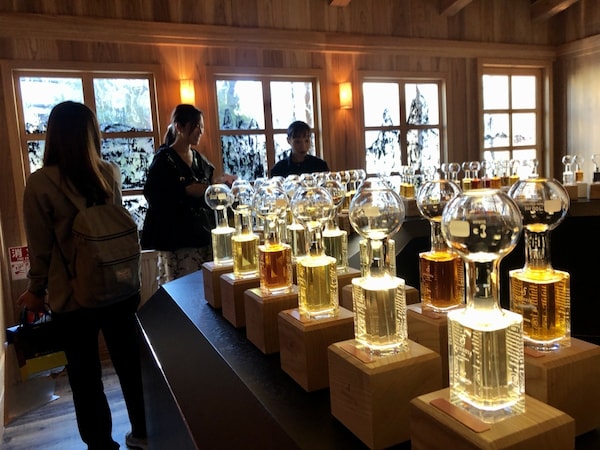
Perfumes on display in the wooden interior at Fueguia 1833, founded by Julian Bedel in Buenos Aires in 2010 (photo: Tim Hornyak)
Like those addresses, Azabudai is a large mixed-use site combining office, retail, hotel, restaurant, education and culture spaces; there’s also a much publicized Central Green vegetation area of some 6,000 square meters and 320 plant species. What makes it different, though, is that it’s more integrated into the fabric of the neighborhood than the monumental format of the other Hills. While Roppongi and Toranomon Hills occupy entire blocks, Azabudai is shoehorned, in a rough T shape, between existing buildings such as the Foreign Ministry’s Diplomatic Archives and the architecturally eccentric Reiyukai Shakaden Temple.
That isn’t to say Azabudai Hills has not erased a small neighborhood of narrow back streets and old houses that were home to about 300 landowners. In their place now stand the Mori JP Tower including the opulent Aman Residences Tokyo, the British School in Tokyo, four shopping malls, the Central Green and arena, and a residential tower housing the exclusive Janu Tokyo hotel; a second residential tower is under construction. Aside from Mori JP Tower, Japan's first "supertall" building, the site’s most startling bit of architecture is Garden Plaza B. Designed by London’s Heatherwick Studio, its façade seems to be melting onto Sakurada-dori street. Architect Thomas Heatherwick has attacked "boring" buildings, calling them a "century‑long global catastrophe."
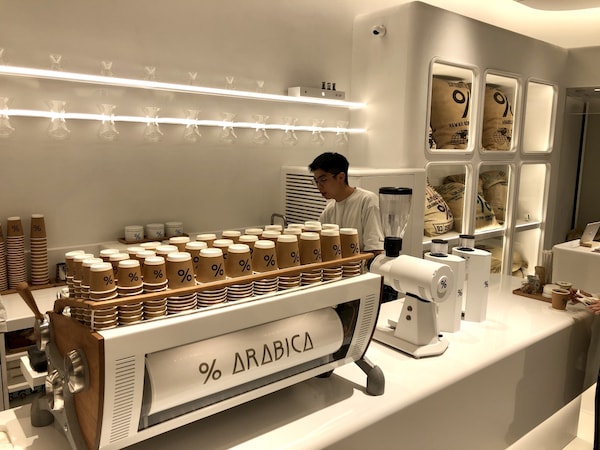
Kyoto-based coffee shop chain Arabica opened its first branches in Tokyo with two outlets in Azabudai Hills (photo: Tim Hornyak)
Azabudai Hills wants to be different—to an extent. Most visitors will stick to the malls and Central Green along Sakura-asa Street, a roughly east-west slope linking Sakurada-dori with Azabu-dori; the complex is far easier to navigate than the labyrinthine Roppongi Hills. There are all the usual luxury brands like Cartier, Hermès and Dior along this incline. The Residence A tower and above- and below-ground Garden Plaza malls, A to D, are stuffed with high-end restaurants serving sushi, teppanyaki, tempura, French and Thai cuisine, not to mention cafés, patisseries, beauty salons and retail spaces.
"You'll find ¥103,545 tins of caviar at Prunier."
Offering sweets, tea and cakes, Patisserie Gin no Mori is one of many shops in Azabudai selling Western confections (photo: Tim Hornyak)
Even though Japan has become a relative bargain for international travelers, the prices may surprise. You’ll find 2,160 yen giant croissants at Échiré, 75,600 yen jars of Japanese honey at l’Abeille, 89,100 yen vials of perfume at Fueguia 1833, and 103,545 yen tins of caviar at Prunier. These offerings will be supplemented in January 2024 with the opening of Azabudai Hills Market, a group of leading specialty stores under the Central Green; they include Japanese beef from the butcher Hiyama, seafood from Toyosu wholesaler Yamayuki and yakitori from Torishiki.

TeamLab Borderless uses 560 projectors and 610 computers to create immersive experiences at its museum in Azabudai Hills (photo: teamLab)
Mori is seeking to repeat its success with the Mori Art Museum, opened 20 years ago at Roppongi Hills, by bringing one of Japan’s hottest cultural attractions to Azabudai. The renowned digital museum teamLab Borderless, previously at Odaiba, opened in Azabudai in early February 2024. The facility’s 560 projectors and 610 computers create breathtaking immersive spaces that make visitors feel like they’re inside an infinite kaleidoscope. Another major cultural draw at the site is the Azabudai Hills Gallery, a 2,300-square-meter museum that opened with an exhibition by Icelandic-Danish artist Olafur Eliasson, known for kinetic sculptures and installations that highlight environmental themes.
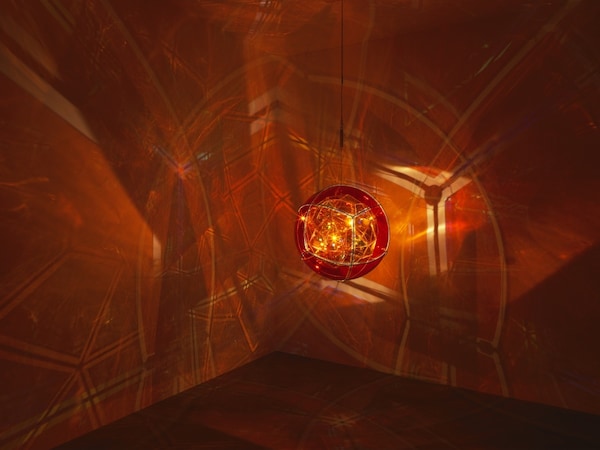
Olafur Eliasson's "Firefly biosphere (falling magma star)" (photo: Jens Ziehe)
Art lovers are spoiled for choice at Azabudai. Aside from teamLab and the Gallery, there is a Shueisha manga gallery, with prints from hit comics like “One Piece” by Eiichiro Oda, as well as Gallery Restaurant Butaiura, which mixes food, wine and contemporary art such as sculptures by Izumi Kato.
There are also public artworks in display. Eliasson’s “A harmonious cycle of interconnected nows” is a group of four sculptures in Mori JP Tower that are inspired by mathematics and movement. On the Central Green, Yoshimoto Nara’s “Miss Forest in Tokyo” is a bronze sculpture of a forest spirit. Nearby are more sculptures: Yutaka Sone’s “Last night of the stone age” themed on humanity’s transition to the Bronze Age, and Zhan Wang’s “Artificial Rock No. 109,” which evokes natural landscapes with stainless steel.
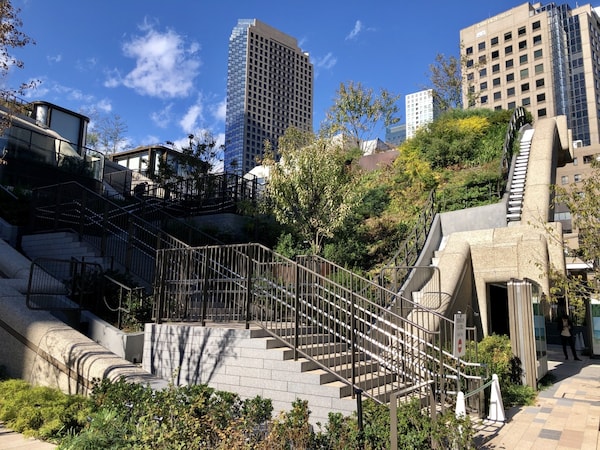
Thomas Heatherwick wanted to create "public, green, open space that was embedded in the architecture" of Azabudai Hills (photo: Tim Hornyak)
Mori’s big-footprint Hills projects initially faced massive opposition and took decades to negotiate and build. Whatever one thinks of them, these addresses have increased the local and international profile of Minato Ward and given rise to a vertical Tokyo with deluxe attractions. More are in the offing: a “Second Roppongi Hills” is due to be completed around 2030. Azabudai Hills is just the latest stop on Mori’s journey to the future of Tokyo.



